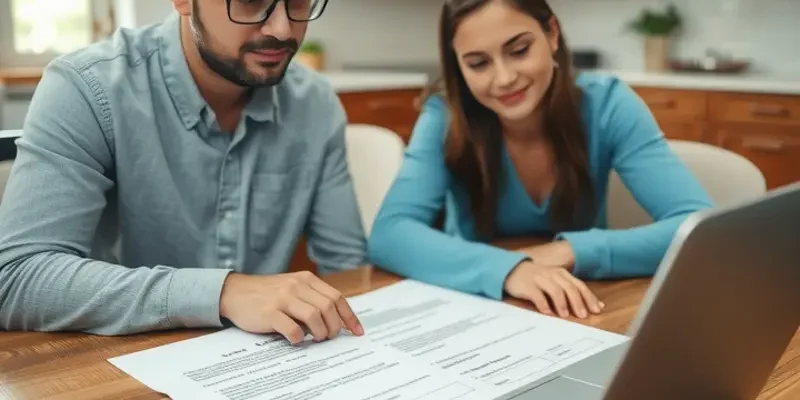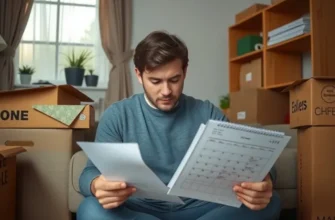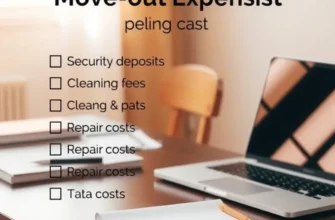As you embark on the exciting journey of renting your first apartment, understanding every aspect of your lease is vital—including the often-misunderstood security deposit. This upfront payment, typically equal to one month’s rent, serves to protect landlords against potential damages or unpaid rent. For first-time renters, young professionals, students, couples, and families alike, getting a grip on this essential component of your lease can pave the way for a smooth renting experience. Knowing how to write a security deposit letter, understanding what can be deducted, and following the appropriate procedures are all aspects that can greatly enhance your financial clarity and lease guidance. This article will equip you with crucial insights, actionable tips, and a helpful letter template to ensure you approach your security deposit situation with full understanding and peace of mind.
Understanding Security Deposits: What You Need to Know

Security deposits are an essential component of the rental agreement process, serving as a financial safeguard for landlords and a crucial consideration for tenants. Understanding their purpose, the common amounts involved, and the legal requirements can empower tenants in their rental journey. A security deposit primarily acts as a protection for landlords against potential damages beyond normal wear and tear, unpaid rent, or breaches of the lease agreement. Typically, these deposits amount to one or two months’ rent, although this can vary based on the property’s location, market conditions, and rental history.
Different states have specific legal guidelines regulating security deposits, affecting both tenants and landlords. It is essential to familiarize yourself with the laws applicable in your state to navigate these deposits confidently. For instance, state laws can dictate the maximum deposit amount, time frames for returning the deposit after lease termination, and whether the deposit must accrue interest. In some states, landlords are required to place security deposits in separate interest-bearing accounts.
Both tenants and landlords have distinct responsibilities concerning security deposits. Tenants should document the property’s condition before moving in, often with photographs or videos, to ensure any pre-existing damage is noted. This inspection helps protect the tenant when it’s time to move out. Maintaining the property’s condition and respecting the lease terms are ongoing tenant responsibilities that directly affect the disposition of their security deposit. On the other hand, landlords must provide a clear explanation of any deductions from the security deposit, typically with an itemized list. Failure to adhere to state laws can result in penalties against the landlord, emphasizing the importance of compliance.
Navigating security deposits can be daunting, especially for first-time renters. Transparency in the lease agreement regarding deposit terms and maintaining open communication with landlords can prevent potential disputes. Before signing a lease, negotiate and clarify all aspects of the security deposit, including the exact conditions under which deductions will be made. This proactive approach helps build a positive tenant-landlord relationship.
In addition to state laws, some municipalities may have specific regulations on security deposits, adding another layer to understanding your rights and obligations. Utilizing resources such as local tenant advocacy groups or online platforms can provide valuable information tailored to your area. As security deposits are closely tied to broader tenant rights, exploring related topics can enhance your overall rental experience. For additional insights into your rights as a tenant, particularly if you’re in a state like Texas, consider reviewing resources like this detailed guide on renter’s rights in Texas. Understanding these aspects ensures you are well-prepared to protect your security deposit effectively.
Through diligent research and proactive management, tenants can confidently navigate their security deposits, ensuring they are not only fulfilling their obligations but also safeguarding their interests.
Crafting Your Security Deposit Letter: A Step-by-Step Guide

Creating a security deposit letter allows you to express your expectations clearly and professionally. A well-drafted letter serves as a formal record that can prevent misunderstandings regarding your security deposit. To compose an effective letter, focus on clarity, detail, and courtesy.
Start your letter by addressing your landlord using their full name and title. Confirm the property’s address and include the date to ensure clarity. Clearly state the purpose of your letter in the opening paragraph, indicating your intent to discuss the security deposit terms.
Moving on to the body of the letter, list details like the lease start and end dates, and the rental property address. Include any agreed terms about the deposit, such as the amount paid and conditions for its return. If any clauses in the lease regarding the deposit seem unclear, request clarification in this section.
Here is a concise template to guide you:
[Your Name]
[Your Address]
[City, State, ZIP Code]
[Date]
[Landlord’s Name]
[Landlord’s Address]
[City, State, ZIP Code]
Dear [Landlord’s Name],
I am writing to discuss our agreement regarding the security deposit for [Property Address] which commenced on [Lease Start Date] and is scheduled to end on [Lease End Date]. I would like to confirm the deposit amount of [Deposit Amount] and discuss the terms regarding its refund.
Please find details within our lease that address the security deposit return policy after vacancy. I appreciate your clarity on any procedures necessary to ensure a smooth process. Should any discrepancies arise, I seek your guidance in resolving them promptly.
Thank you for your attention to this matter. I look forward to your response to confirm the details described herein.
Sincerely,
[Your Name]
Employing precise language in your letter sets a respectful tone and minimizes the potential for miscommunication. It’s important to maintain records of any correspondence between you and your landlord. Keep copies of all letters sent and received.
Ensure that you send the letter via a method that provides delivery confirmation, such as certified mail, to know when your landlord receives it. Additionally, if you are negotiating modifications to your lease terms, consider checking out our month-by-month rental guide for insights on flexible arrangements.
Finally, remember that showing appreciation in your communication fosters a cooperative relationship, which can be beneficial when addressing matters like security deposits. By taking these steps, you can confidently navigate the process of crafting a well-prepared security deposit letter.
Final words
Understanding the intricacies of security deposits not only protects your financial interests but also fosters a healthy landlord-tenant relationship. By knowing the purpose of a security deposit, understanding your rights, and being equipped with the tools to draft a security deposit letter, you can approach your renting experience with confidence and clarity. Financial transparency leads to peace of mind, paving the way for a fulfilling renting journey in your new home.









